Alexandria National Museum
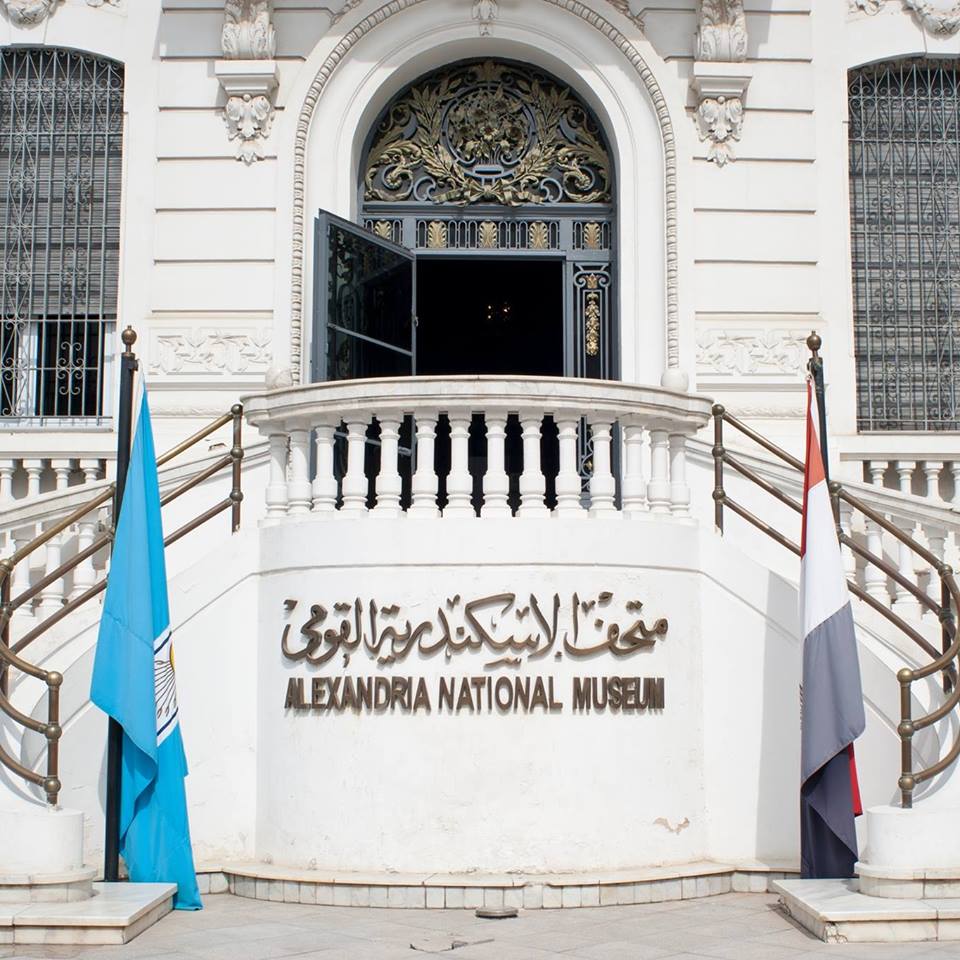 To grasp the vast history of this famed city, the collection guides you from the Pharaonic era (basement), through the Hellenistic era when Alexandria and Egypt were governed by the Ptolemy dynasty founded by Alexander the Great (ground floor), to the Byzantine and Islamic periods (upper floor). In addition to displays, statuary, and antiquities unearthed in and around the city, including finds from underwater explorations offshore, excellent maps imagine what the classical city of Alexandria looked like, helping visitors understand the changing face of the city.
To grasp the vast history of this famed city, the collection guides you from the Pharaonic era (basement), through the Hellenistic era when Alexandria and Egypt were governed by the Ptolemy dynasty founded by Alexander the Great (ground floor), to the Byzantine and Islamic periods (upper floor). In addition to displays, statuary, and antiquities unearthed in and around the city, including finds from underwater explorations offshore, excellent maps imagine what the classical city of Alexandria looked like, helping visitors understand the changing face of the city.
Qaitbay Citadel
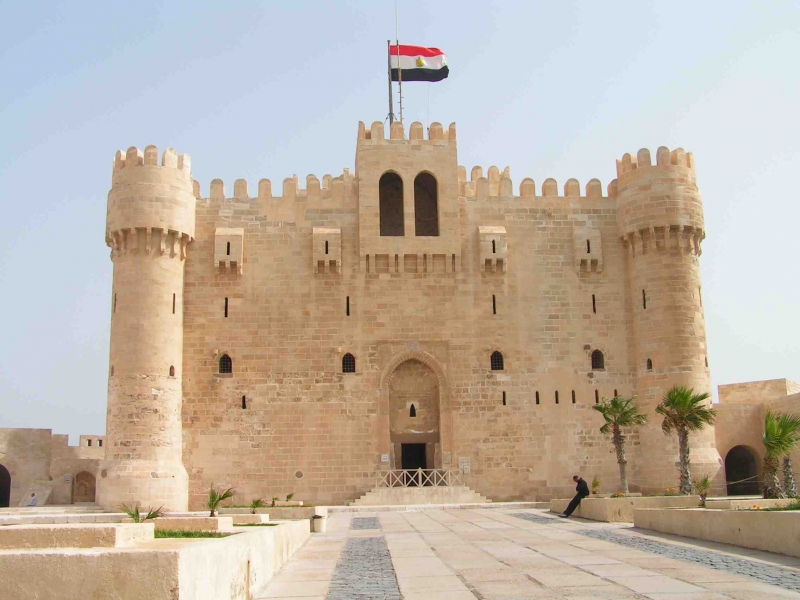 Walk the long shorefront Corniche road heading west, and you will finally arrive at Fort Qaitbey. A modest substitute for what was once the site of the mighty Pharos Lighthouse—one of the seven wonders of the ancient world—this squat and dinky fort has stood guard over Alexandria's eastern harbor since 1480. Pharos was toppled in 1303 by a violent earthquake and the fort was much later built by Mamluke Sultan Qaitbey in an effort to fortify this important Egyptian port from attack; rubble from the toppled lighthouse was used in its construction. Inside, you can explore the series of stone-walled chambers and climb up to the roof to look out over the Mediterranean.
Walk the long shorefront Corniche road heading west, and you will finally arrive at Fort Qaitbey. A modest substitute for what was once the site of the mighty Pharos Lighthouse—one of the seven wonders of the ancient world—this squat and dinky fort has stood guard over Alexandria's eastern harbor since 1480. Pharos was toppled in 1303 by a violent earthquake and the fort was much later built by Mamluke Sultan Qaitbey in an effort to fortify this important Egyptian port from attack; rubble from the toppled lighthouse was used in its construction. Inside, you can explore the series of stone-walled chambers and climb up to the roof to look out over the Mediterranean.
Roman Amphitheater (Kom el-Dikka)
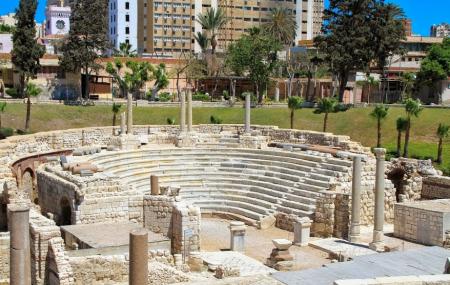 Nobody thought much of the ancient rubble mound in central Alexandria until, in 1947, they decided to clear the site to make way for new housing. The area known as Kom el-Dikka (Mound of Rubble) revealed a whole swag of ancient ruins, including a small Roman theater. Today, this park area includes the remnants of a Ptolemaic temple and the mosaic flooring of a wealthy Roman-era dwelling now known as the Villa of the Birds.
Nobody thought much of the ancient rubble mound in central Alexandria until, in 1947, they decided to clear the site to make way for new housing. The area known as Kom el-Dikka (Mound of Rubble) revealed a whole swag of ancient ruins, including a small Roman theater. Today, this park area includes the remnants of a Ptolemaic temple and the mosaic flooring of a wealthy Roman-era dwelling now known as the Villa of the Birds.
Catacombs (Kom el-Shuaqqfa)
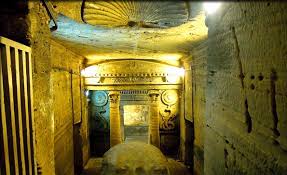 Hewn from the rock on the southern slopes of a hill in the Carmous district and thought to date from the 2nd century CE, the Catacombs of Kom el-Shuaqqfa offer an admirable example of the characteristic Alexandrian fusion of Egyptian and Greco-Roman styles. Discovered in 1900 (thanks to a donkey falling into them), they are laid out on several levels of sarcophagi and loculi (shelf tomb) chambers.
Hewn from the rock on the southern slopes of a hill in the Carmous district and thought to date from the 2nd century CE, the Catacombs of Kom el-Shuaqqfa offer an admirable example of the characteristic Alexandrian fusion of Egyptian and Greco-Roman styles. Discovered in 1900 (thanks to a donkey falling into them), they are laid out on several levels of sarcophagi and loculi (shelf tomb) chambers.
A spiral staircase leads down into the ground to the main rotunda. To the right, you can enter the main burial chamber and also the Sepulchral Chapel with 91 loculi; each large enough to accommodate three or four mummies. To the left is a large room known as the Triclinium Funebre, which would have been used for banquets in honor of the dead.
Pompey's Pillar
 In Carmous, on a hill littered with remains of ancient walls, architectural fragments, and rubble, Alexandria's only ancient monument is left standing. Pompey's Pillar rises from the ruins of the ancient and famous Serapeion (Temple of Serapis), which was once used to store the overflow of manuscripts from the Great Library of Alexandria. This column of red Aswan granite with a Corinthian capital, rising to a height of almost 27 meters, actually has nothing to do with Pompey; it was set up in 292 CE in honor of Diocletian, who supplied food for the starving population after the siege of the city.
In Carmous, on a hill littered with remains of ancient walls, architectural fragments, and rubble, Alexandria's only ancient monument is left standing. Pompey's Pillar rises from the ruins of the ancient and famous Serapeion (Temple of Serapis), which was once used to store the overflow of manuscripts from the Great Library of Alexandria. This column of red Aswan granite with a Corinthian capital, rising to a height of almost 27 meters, actually has nothing to do with Pompey; it was set up in 292 CE in honor of Diocletian, who supplied food for the starving population after the siege of the city.
Abu Abbas AlMursi Mosque
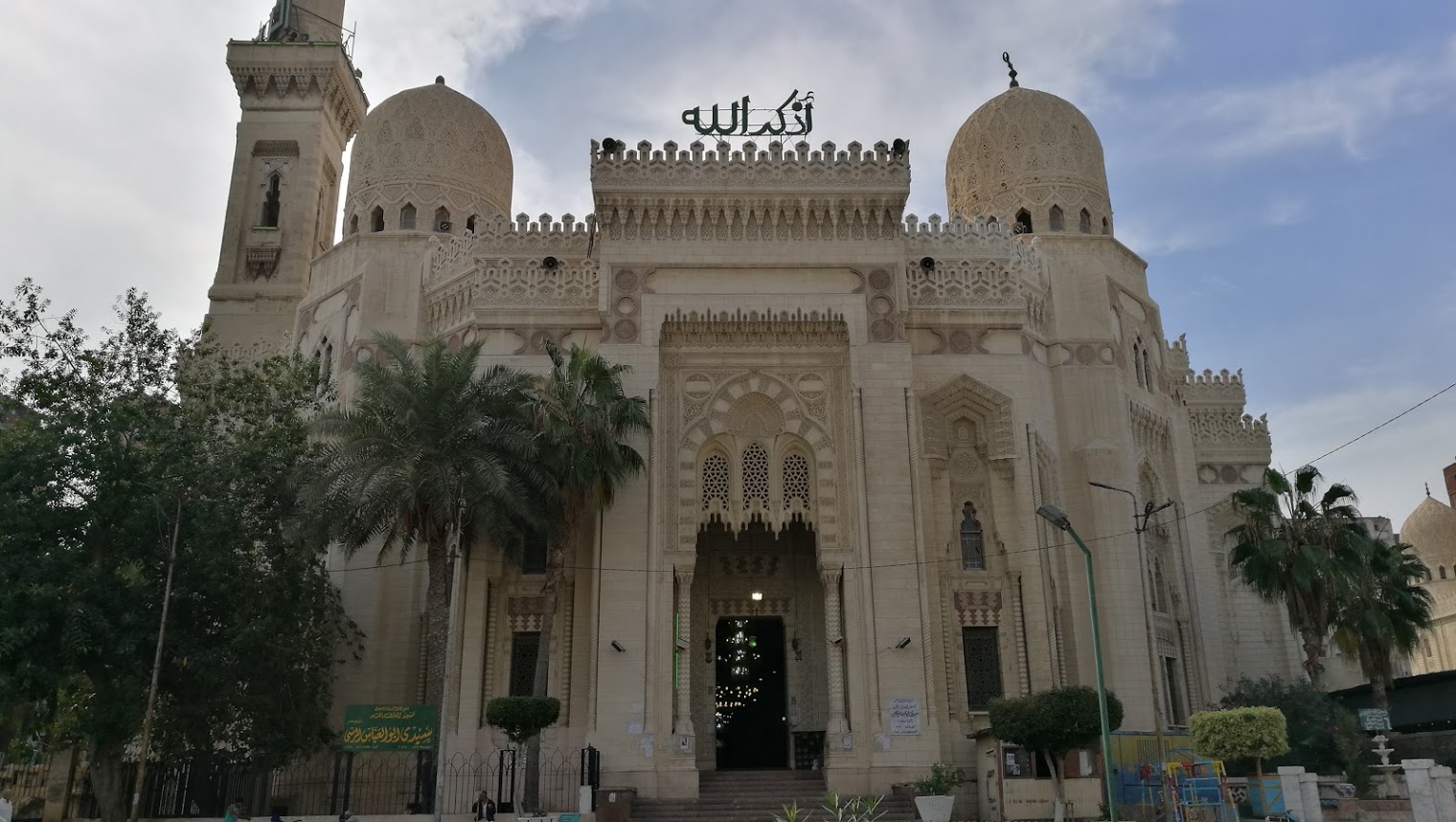 One of Alexandria's major landmarks, the Abu Abbas AlMursi Mosque was built in 1796 over the tomb of the 13th century Sufi holy man Abu Abbas Al-Mursi. Originally from Murcia (in Spain's Andalusia region), Abu Abbas became a highly esteemed religious leader in Alexandria and his teachings are still revered in Egypt. The mammoth cream-colored mosque that holds his name is a major pilgrimage site. For non-religious visitors, the mosque's exquisite facade of swirling Islamic calligraphy designs and motifs is the major attraction. Those that want to enter to see the beautiful and intricate mosaic halls should dress modestly and leave their shoes at the main entrance.
One of Alexandria's major landmarks, the Abu Abbas AlMursi Mosque was built in 1796 over the tomb of the 13th century Sufi holy man Abu Abbas Al-Mursi. Originally from Murcia (in Spain's Andalusia region), Abu Abbas became a highly esteemed religious leader in Alexandria and his teachings are still revered in Egypt. The mammoth cream-colored mosque that holds his name is a major pilgrimage site. For non-religious visitors, the mosque's exquisite facade of swirling Islamic calligraphy designs and motifs is the major attraction. Those that want to enter to see the beautiful and intricate mosaic halls should dress modestly and leave their shoes at the main entrance.
Montaza Gardens
 An oasis of calm on the city's eastern edge, Montazah is a lush haven of tall palm trees, trimmed lawns, and blossoming flowers that was once off-limits to all but the royal court. Built as a hunting lodge in the 1890s by Khedive Abbas Hilmi, it was later extended substantially by King Fuad, replacing Ras el-Tin Palace as the royal family's summer house. The eccentrically-designed Montazah Palace with its ornate Florentine-inspired towers and Rococo flourishes is not open to the public, but everyone is welcome to stroll within the sprawling gardens; a welcome respite in nature after a day spent within Alexandria's hustle.
An oasis of calm on the city's eastern edge, Montazah is a lush haven of tall palm trees, trimmed lawns, and blossoming flowers that was once off-limits to all but the royal court. Built as a hunting lodge in the 1890s by Khedive Abbas Hilmi, it was later extended substantially by King Fuad, replacing Ras el-Tin Palace as the royal family's summer house. The eccentrically-designed Montazah Palace with its ornate Florentine-inspired towers and Rococo flourishes is not open to the public, but everyone is welcome to stroll within the sprawling gardens; a welcome respite in nature after a day spent within Alexandria's hustle.